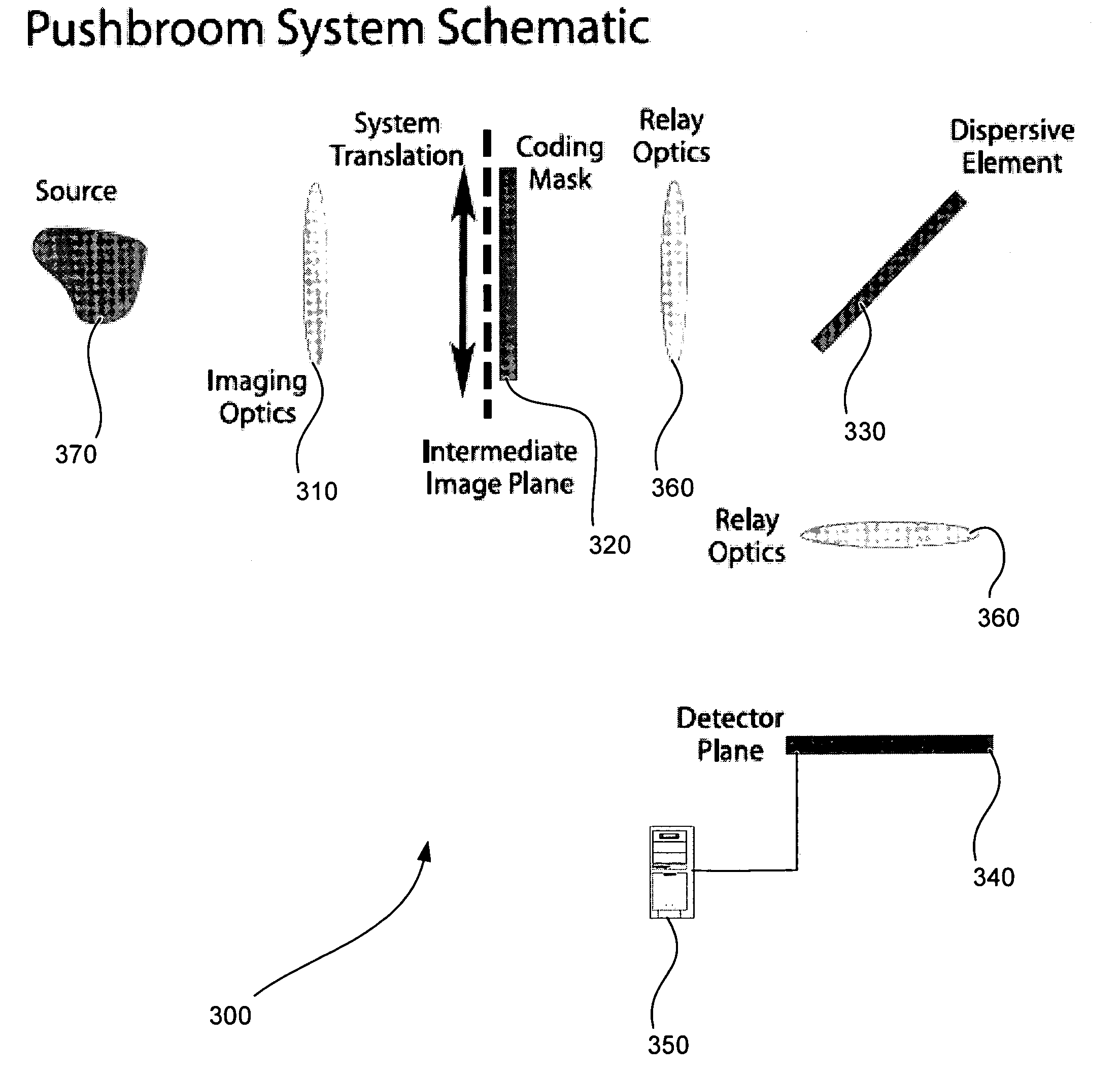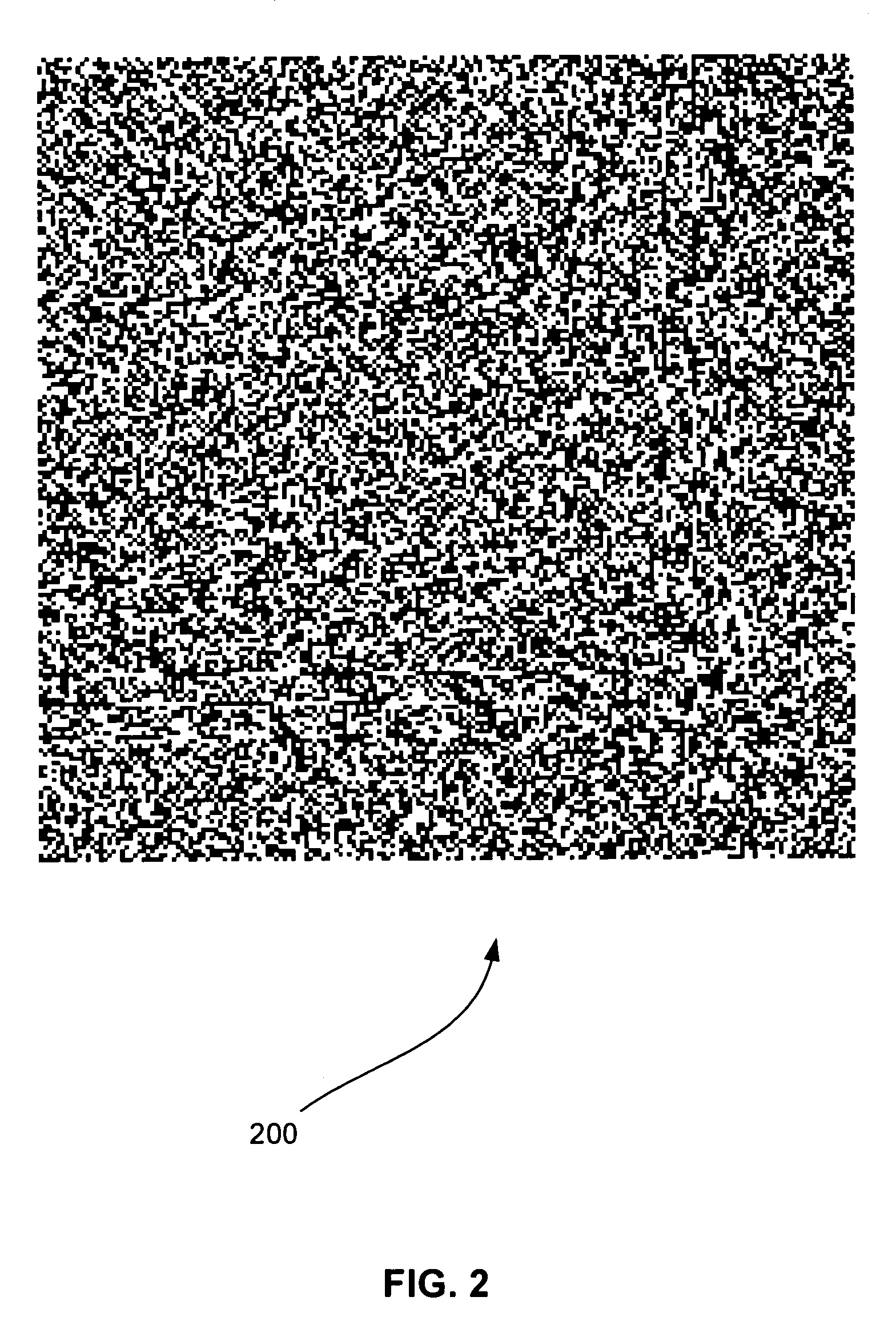Coding and modulation for hyperspectral imaging
a hyperspectral imaging and modulation technology, applied in the field of hyperspectral imaging systems and methods, can solve the problems of poor optical efficiency, limited number of apertures of tunable filters in some cases, and ininversely proportional to spatiospectral resolution
- Summary
- Abstract
- Description
- Claims
- Application Information
AI Technical Summary
Benefits of technology
Problems solved by technology
Method used
Image
Examples
Embodiment Construction
[0036]One embodiment of the present invention is a multiplex system for hyperspectral imaging using a static coded aperture spectrometer. The system is not interferometric and does not require extraordinary stability or alignment precision.
[0037]The system does not encounter the missing cone problem and is capable of well conditioned estimation of spatial and spectral features of arbitrary size and distribution. The basic design of the system is based on a 2D coded aperture static multimode multiplex spectrometer (MMS). A static MMS is described in U.S. Pat. No. 7,092,101, which is herein incorporated by reference in its entirety. A 2D coded aperture static MMS is described in U.S. patent application Ser. No. 11 / 334,546 filed Jan. 19, 2006, which is herein incorporated by reference in its entirety.
[0038]Coded apertures are used to increase the throughput of imagers and spectrometers. Coded apertures for use in spectroscopy were proposed more than 50 years ago. Although early studies...
PUM
 Login to View More
Login to View More Abstract
Description
Claims
Application Information
 Login to View More
Login to View More - R&D
- Intellectual Property
- Life Sciences
- Materials
- Tech Scout
- Unparalleled Data Quality
- Higher Quality Content
- 60% Fewer Hallucinations
Browse by: Latest US Patents, China's latest patents, Technical Efficacy Thesaurus, Application Domain, Technology Topic, Popular Technical Reports.
© 2025 PatSnap. All rights reserved.Legal|Privacy policy|Modern Slavery Act Transparency Statement|Sitemap|About US| Contact US: help@patsnap.com



